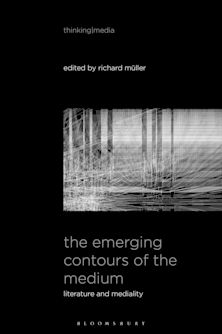- Home
- ACADEMIC
- Film & Media
- Film and Media Studies - Other
- Qualitative Method Interpretations in Communication Studies
Qualitative Method Interpretations in Communication Studies
You must sign in to add this item to your wishlist. Please sign in or create an account
Description
Communicologist James A. Schnell illuminates qualitative method interpretation through unique and wide-ranging areas of study. In Section One Schell highlights qualitative interpretations of cross-cultural interaction in settings such as the classroom and the military, and he looks at the particular circumstances of interaction in South Africa, China, and Central America. In Section Two he describes qualitative case study analysis of the counterculture, a youth camp, the U.S. Air Force, and two health-care settings. In Section Three Schnell focuses on education-oriented qualitative studies of public speaking, self-help tapes, advertising in popular magazines, classroom pedagogy, and the role of the teacher. Schnell's detailed but clear interpretive approach gives the varied qualitative applications consistency of style and purpose, making this book a useful addition to the literature on qualitative studies in communications.
Table of Contents
Chapter 2 The Multicultural Classroom: Working to Creat Opportunities Out of Possible Obstacles
Chapter 3 Enhancement of Cross-Cultural Communication within a Multiethnic Environment: The Educational Function of the U.S. Air Force Office of Social Actions
Chapter 4 Cross-Cultural Toleration and Its Effect on Classroom Communication in South African Universities: A Survey of South African Faculty Members
Chapter 5 Mass Media and the Impact of International Peacekeeping, Peace Enforcement, and Humanitarian Operations on U.S. National Security Strategy
Chapter 6 Understanding the Shock in "Culture Shock"
Chapter 7 Applied Interpersonal Communication in a Cross-Cultural Context: The Use of Interpreters as a Technique When Interviewing Spanish-Speaking Individuals
Chapter 8 Neoauthoritarian Journalistic Approaches Used by the Chinese Government during the 1996 Taiwan Controversy
Chapter 9 In Search of Afrocentric Perspectives on Human Communications
Part 10 Section Two: Qualitative Interpretation Case Studies
Chapter 11 The Symbolic Interactionist Use of Participant Observation: A Study of Conflict Resolution Communication in a Countercultural Setting
Chapter 12 Understanding a Spiritual Youth Camp as a Consciousness Raising Group: The Effects of a Subculture's Communication
Chapter 13 Using C-SPAN to Study Ross Perot's Expression of Sensitivity and Insensitivity with Diversity Issues during the 1992 Presidential Campaign
Chapter 14 No Nukes: Music as a Form of Countercultural Communication
Chapter 15 Communication Strategies for Reducing Patient Anxiety in Pedodontic Dentistry
Chapter 16 The Hospital Chaplain and the Perpetuation of Understanding in the Health Care Environment
Part 17 Section Three: Qualitative Interpretations in Education (Classroom and Research)
Chapter 18 The Use of Self-Help Subliminal Tapes as an Experiential Learning Tool
Chapter 19 Experiential Learning of Nonverbal Communication in Popular Magazine Advertising
Chapter 20 Comparing the Role of the Teacher in Small Liberal Arts Colleges and Large Public Universities
Chapter 21 Conclusion: The Personal Effects of Participant Observation on the Participant Observer
Product details
| Published | 25 May 2001 |
|---|---|
| Format | Ebook (Epub & Mobi) |
| Edition | 1st |
| Extent | 192 |
| ISBN | 9780739159804 |
| Imprint | Lexington Books |
| Publisher | Bloomsbury Publishing |


































